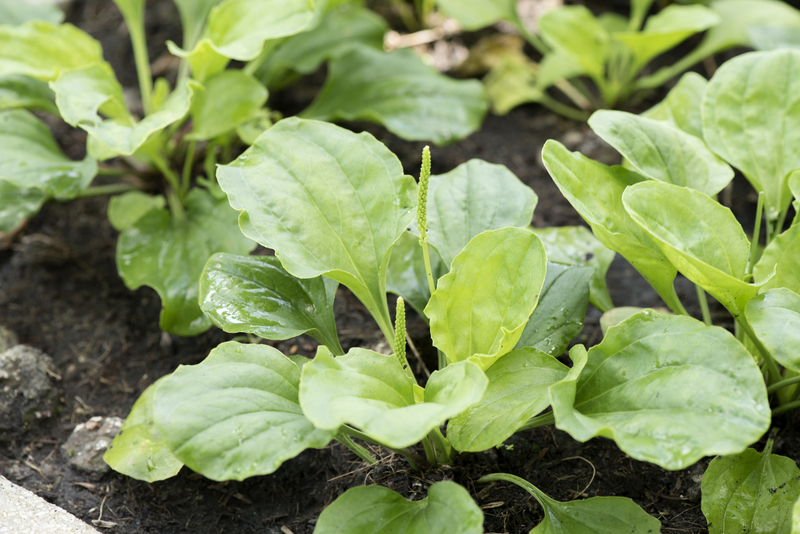Achieving Artistic Gardens through Hedge Trimming Techniques
Posted on 19/09/2025
Achieving Artistic Gardens through Hedge Trimming Techniques
Hedge trimming is more than just maintaining the boundaries of your property--it is an art form that can transform an ordinary outdoor space into a spectacular living masterpiece. Artistic gardens achieved through skillful hedge trimming can stun, delight, and inspire. With the right techniques and a creative mindset, anyone can sculpt hedges into beautiful designs that elevate the aesthetics of their landscape.

Understanding Hedge Trimming as an Art
The craft of hedge trimming has evolved from simple boundary maintenance to a highly esteemed technique in garden artistry. By shaping hedges, you can create a variety of features--from geometric borders to whimsical topiary creations. Artistic gardens leverage these techniques to build unique, picturesque, and functional outdoor spaces.
- Structural definition: Hedges frame pathways, entryways, and garden rooms.
- Focal points: Topiary shapes or intricate designs serve as eye-catching features.
- Thematic expression: Artistic trimming can reflect themes, whether whimsical, formal, or naturalistic.
By infusing creativity into hedge sculpting, you can design landscapes that not only add curb appeal but also express personal style and enhance biodiversity.
Key Elements of Artistic Hedge Gardens
The Role of Shape and Form
Fundamental to achieving stunning garden hedges is understanding the interplay of shape and form. From precise cubes to elaborate animal sculptures, mastering diverse forms opens up a world of possibilities.
- Geometric designs: Symmetry, straight edges, and perfect spheres add formality and order.
- Organic forms: Wavy lines, natural contours, and freeform shapes imbue a relaxed, contemporary vibe.
- Figurative topiary: Creative trimming into animal, abstract, or themed shapes brings playfulness and storytelling to your outdoor space.
The Importance of Plant Selection
Not all shrubs are equally suited to artistic hedge trimming. Choosing the right plant determines both the health of the hedge and the ultimate success of your design.
- Dense, small-leaved species: Plants such as boxwood, yew, privet, and holly are excellent for precise shapes.
- Evergreens: Stay vibrant and full year-round, maintaining their structure through all seasons.
- Growth habits: Consider how each species grows and how often it needs trimming to hold a shape.
Selecting the ideal hedge plants is a fundamental step for anyone serious about achieving a striking artistic garden through hedge trimming techniques.
Essential Tools for Artistic Hedge Trimming
You cannot create an artistic garden without the right tools. Quality equipment not only makes shaping easier but also ensures clean cuts for hedge health and longevity.
- Hand shears: Best for detailed work and fine adjustments. Choose sharp, ergonomic shears for precision.
- Hedge trimmers: Electric or gas-powered for larger jobs, these allow quick shaping of long stretches and basic forms.
- Topiary frames: Wire forms guide intricate shapes or help with complicated designs.
- Ladders and protective gear: Safety first--even skilled gardeners benefit from stable ladders, gloves, and eye protection.
Maintenance is essential: Clean and sharpen your tools regularly to ensure a smooth cut and healthy regrowth.
Step-by-Step Hedge Trimming Techniques for Artistic Gardens
1. Planning Your Design
Every stunning artistic hedge garden begins with careful planning. Decisions made early, such as plant choice, hedge placement, and overall theme, will guide every trim and snip.
- Sketch ideas: Use paper or digital tools to draw proposed shapes and layouts.
- Mark boundaries: Use garden twine, stakes, or chalk to outline where each hedge or feature will go.
- Consider perspectives: Think about how hedges will appear from key viewpoints, entrances, and seating areas.
2. Establishing the Basic Shape
Start with light trims to remove excess growth and reveal the intended silhouette. For geometric designs, use stake-and-string guides to ensure straight lines. To create curves or rounded forms, use cardboard templates or topiary frames.
- Always begin at the top and work downward for even results.
- For straight hedges, gently slope the sides inwards as you move downward. This ensures sunlight reaches the lower branches, promoting fullness from top to bottom.
- Never cut more than one-third of a shrub at once to avoid plant stress.
3. Refining Details and Adding Artistic Flair
Once the basic form is established, it's time for precision work. Hand shears are ideal for intricate shapes, delicate topiary, or blending edges. Consider using wire frames as guides for more elaborate figures or abstract designs.
- Sculpting animals or whimsical forms: Work slowly, removing small amounts and stepping back frequently to assess progress.
- Creating patterns or textures: Use different shearing techniques or alternate heights to create checkerboards, swirls, or waves on the hedge surface.
- Layering and depth: Trim outer layers delicately, leaving some sections fuller for a sense of movement or three-dimensionality.
4. Finishing Touches and Seasonal Maintenance
The magic of artistic garden hedges is sustained through ongoing care. Regular, light trims keep shapes crisp and healthy.
- Prune 2-3 times a year: For most formal designs, schedule trims in late spring, midsummer, and early autumn.
- Remove dead or diseased wood: Inspect regularly and cut away damaged sections to prevent spread.
- Fertilize and mulch: Healthy growth supports sharper lines. Feed your hedges and apply mulch to retain soil moisture.
Popular Artistic Hedge Trimming Styles
There is an entire world of style options when creating artistic gardens through hedge trimming. Choose one or experiment with several to create a distinctive outdoor space:
Formal Geometric Hedges
- Straight lines and right angles: Ideal for French or English gardens. These designs use rectangles, cubes, and perfect spheres for a stately effect.
- Symmetrical patterns: Mirror images along pathways or entryways lend elegance and order.
Topiary Creations
- Animal shapes: From peacocks to rabbits, animal forms enchant children and adults alike.
- Abstract and spiral designs: Whimsical spirals, cones, and cubes create modern, playful vibes.
Naturalistic Styles
- Soft contours and flowing lines: Rather than rigid shapes, gently curved hedges mirror the movement of hills, rivers, and clouds for a relaxed feel.
- Integrating with flower beds: Combine hedges with colorful perennials and ornamental grasses for layered, picturesque gardens.
Themed Gardens
- Maze gardens: Intricately trimmed, tall hedges create interactive mazes for fun and mystery.
- Seasonal displays: Incorporate seasonal changes, trimming hedges into themed shapes for holidays or celebrations.
Eco-Friendly Hedge Trimming for Sustainable Artistic Gardens
In today's environment-conscious world, artistic gardens can be both beautiful and beneficial to nature. Proper hedge sculpting techniques can support wildlife, improve soil quality, and reduce resource waste.
Tips for Sustainable Hedge Trimming
- Choose native species: Support local birds, pollinators, and insect populations.
- Avoid chemicals: Mulch and compost trimmings to feed your garden organically.
- Leave gaps and layers: Allow some sections to remain untrimmed, providing shelter for wildlife and encouraging bloom.
By thoughtfully combining artistic creativity with eco-friendly practices, you can create a garden hedge masterpiece that's as responsible as it is remarkable.
Common Mistakes and How to Avoid Them
As you refine your hedge trimming artistry, beware of common errors that can lead to less-than-ideal results or even harm your plants:
- Over-pruning: Cutting too much can stress or kill a hedge. Always remove a little at a time.
- Uneven cuts: Step back often to check symmetry and use guides whenever possible.
- Ignoring timing: Trimming during extreme heat, cold, or active flowering seasons can damage plants. Stick to preferred seasons for your species.
- Dull tools: Clean, sharp blades are vital to prevent ragged cuts that invite disease.
Educate yourself on the specific needs of your hedge species and your desired style before you begin, ensuring a healthy, aesthetically pleasing result.

Inspiration: Artistic Gardens from Around the World
Need inspiration for your own artistic hedge garden? Look to grand estates and botanical gardens worldwide where hedge-trimming is a celebrated craft.
- Levens Hall, England: Home to the oldest topiary garden, featuring dramatic geometric and animal shapes.
- Chateau de Villandry, France: Renowned for its formal parterre gardens created with intricately trimmed boxwood hedges.
- Ninomaru Garden, Japan: Embraces naturalistic cloud-pruned hedges harmonizing perfectly with stone and water elements.
From these examples, you can draw creative ideas for your own unique outdoor masterpiece using hedge trimming techniques.
Conclusion: Transform Your Garden with Artistic Hedge Trimming
Achieving artistic gardens through hedge trimming techniques is both a science and an expression of personal creativity. From choosing the right plants and tools, planning mesmerizing designs, to executing flawless trims and maintaining your green sculptures, every detail contributes to the magic of your living landscape.
With a thoughtful approach, passion for art, and a touch of patience, anyone can master the craft of artistic hedge sculpting. Transform your garden into a place of beauty, inspiration, and ecological value--one trim at a time.
- Start with basic shapes and build your skills over time.
- Experiment with different styles to find the perfect match for your personality and space.
- Pursue sustainability for a garden that is both stunning and kind to the earth.
Embrace the artistry of hedge trimming, and let your garden become a masterpiece that reflects your unique vision to everyone who visits.

